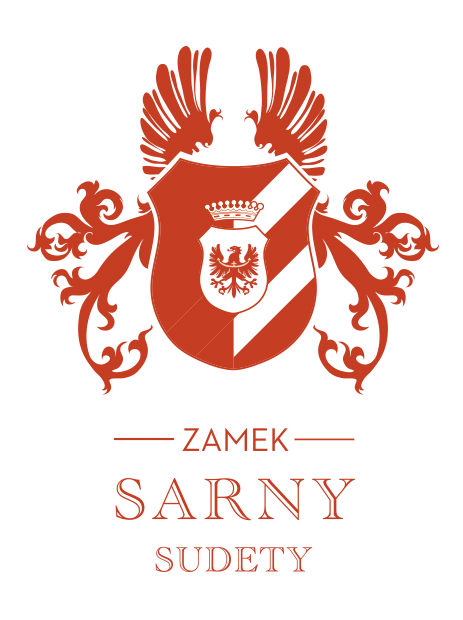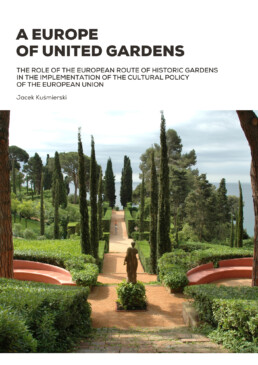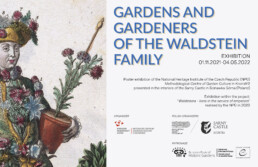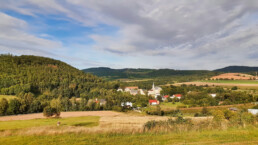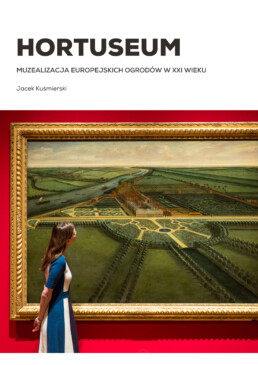New ECSO Paper - A Europe of United Gardens
A Europe of united gardens. The role of the European Route of Historic Gardens in the implementation of the cultural policy of the European Union
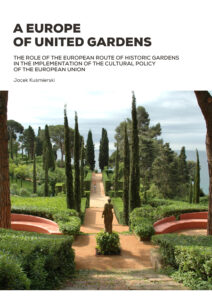 In October 2020, the European Route of Historic Gardens was certified by the Council of Europe. This was not only a great honour, but also an important step in recognising the historic, artistic, social and natural values of historic green spaces. Admission to the Cultural Route of the Council of Europe has also opened up opportunities to participate in various projects promoting culture and tourism at the international level. What could be the role of the European Route of Historic Gardens in this regard? How can it be involved in the implementation of the European Union’s cultural policy? This paper seeks to find answers to these questions.
In October 2020, the European Route of Historic Gardens was certified by the Council of Europe. This was not only a great honour, but also an important step in recognising the historic, artistic, social and natural values of historic green spaces. Admission to the Cultural Route of the Council of Europe has also opened up opportunities to participate in various projects promoting culture and tourism at the international level. What could be the role of the European Route of Historic Gardens in this regard? How can it be involved in the implementation of the European Union’s cultural policy? This paper seeks to find answers to these questions.
The book presents a results of the thesis written by Jacek Kuśmierski, conservator of historic gardens and the ERHG independent collaborator, at the Postgraduate Studies "Cultural Diplomacy" at the Jagiellonian University, under the supervision of Prof. Bożena Gierat-Bieroń.
5 things you will find inside:
- A lot of interesting information about the role of gardens in the implementation of the cultural policy of the European Union.
- The most important garden promotion programmes.
- Examples of good practice of including historic gardens in cultural projects.
- A map of sites whose pilot projects were supported by the European Year of Historic Gardens 1993.
- A map of Garden Members of the European Route of Historic Gardens.
The book published by the Sarny Castle Trust and the Eduard Petzold European Centre for Garden Art, under the patronage of the European Route of Historic Gardens. Publication available in English and Polish.
ECSO Exhibitions in 2021
‘Gardens and Gardeners of the Wallenstein Family’
1 November 2021 – 4 May 2022, Sarny Castle (2nd floor)
The poster exhibition ‘Gardens and Gardeners of the Wallenstein Family’ presents thirty splendid palaces and gardens, located in Duchcov, Jičín, Kozel, Mnichovo Hradiště and Prague, which belonged to this aristocratic family. Biographies of the gardeners who cared for them are also included for the first time. The exhibition pays special attention to the Dittrich family, which had a major contribution to the development of Czech horticulture in the 19th century.
The exhibition initiates collaboration between the Eduard Petzold European Centre for Garden Art at the Sarny Castle and the National Garden Culture Centre in Kroměříž. Exhibition available in Czech and Polish.
Organizer: National Heritage Institute (NPÚ), National Garden Culture Centre in Kroměříž, Czech Republic
Exhibition curator: Ph.D. Eng. Lenka Křesadlová
Collaboration: Jaromír Tlustý (State Regional Archives Litoměřice), Eng. Michaela Letá, Radim Vrla, MSc Jan Štětina
Polish Organizer: The Sarny Castle Trust, Eduard Petzold European Centre for Garden Art, Poland
Patronage: European Route of Historic Gardens
Editing: MSc Jacek Kuśmierski, MSc Łukasz Przybylak
Contact: ecso@zameksarny.pl
Previous ECSO exhibitions:
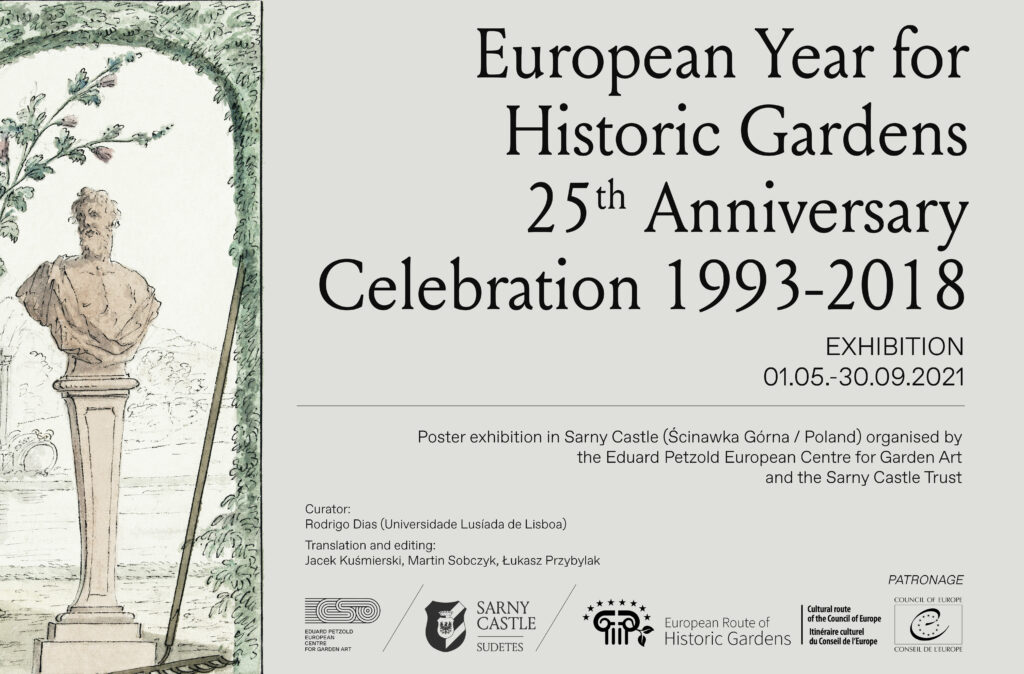 66 European Historic Gardens
66 European Historic Gardens
1 May – 30 September 2021, Sarny Castle (2nd floor)
Welcome to the first poster exhibition organised by the Eduard Petzold European Centre for Garden Art on the occasion of the 25th anniversary of the European Year of Historic Gardens!
The exhibition presents 66 sites received conservation funding from the European Commission in 1993. It was first displayed in Portugal in 2018 on the occasion of the European Year of Cultural Heritage and since then has travelled across continent. Sarny Castle is the first venue in Poland to host it in its 16th-century interiors. The European Route of Historic Gardens is the patron of the exhibition.
Curator: Rodrigo Dias (Lusíada University of Lisbon)
Translation and edition: Jacek Kuśmierski, Martin M. Sobczyk, Łukasz Przybylak
2020: The Year in Review
2020 was the year of the largest renovation and construction efforts in recent years at Sarny Castle. It was also the year of the biggest conservation discovery so far. Despite the covid pandemic and repeated lockdowns in Europe, we were able to co-organize major cultural events.
Here's a list with a short description of what we were able to achieve. Click on the headlines to find out more.
The castle's roof is rebuilt
 We completed the roof reconstruction that had begun in 2016. After five years and three construction seasons, we now have a rebuilt roof structure and covering made using slate. For the first time in decades, the roof is in excellent condition and secures the residence's valuable interior. The renovation was supported by Poland's Ministry of Culture and National Heritage.
We completed the roof reconstruction that had begun in 2016. After five years and three construction seasons, we now have a rebuilt roof structure and covering made using slate. For the first time in decades, the roof is in excellent condition and secures the residence's valuable interior. The renovation was supported by Poland's Ministry of Culture and National Heritage.
A comprehensive renovation of The Composers House is complete
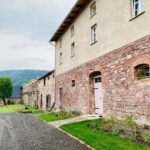 After almost two years of construction work, we completed a total refurbishment of one of our farm houses. We called it The Composers House because each of the 10 guest rooms has a Polish early-music composer as its patron. Behind an unchanged modest exterior from 1870 hides the highest quality interior.
After almost two years of construction work, we completed a total refurbishment of one of our farm houses. We called it The Composers House because each of the 10 guest rooms has a Polish early-music composer as its patron. Behind an unchanged modest exterior from 1870 hides the highest quality interior.
The renovation of The Administrator’s House has begun
 We have renovated the building's roof using mostly original tiles. We have dismantled the chaotic additions inside. In the coming years, we will pursue the renovation aimed at showcasing the historical values of the building that dates back to 1590.
We have renovated the building's roof using mostly original tiles. We have dismantled the chaotic additions inside. In the coming years, we will pursue the renovation aimed at showcasing the historical values of the building that dates back to 1590.
The northern façade terrace is renovated
We stabilized the terrace structurally and renovated the historical stonemasonry. The renovation was supported by the Lower Silesian Voivodeship.
We discovered Baroque paintings in the building behind the chapel
 In an unexpected place during the renovation of The Administrator’s House hid polychrome paintings dating back to the 17th century. Painted beams survived because they were hidden above ceilings installed at a later time. A conservation program has been developed and approved by authorities and will be implemented in the coming seasons.
In an unexpected place during the renovation of The Administrator’s House hid polychrome paintings dating back to the 17th century. Painted beams survived because they were hidden above ceilings installed at a later time. A conservation program has been developed and approved by authorities and will be implemented in the coming seasons.
Conservation work was done on previously discovered wall paintings in the castle
 We now know more about the wall polychrome decorations discovered in 2019 and entered into the landmark register at our request. In 2020, we discovered additional decorations and revealed painting layers from the 18th and 19th centuries. In 2021, we plan to carry out a comprehensive conservation program on 17th-century paintings in a chamber on the castle’s ground floor. The 2020 effort was supported by a grant from the Lower Silesian Regional Landmark Conservation Officer.
We now know more about the wall polychrome decorations discovered in 2019 and entered into the landmark register at our request. In 2020, we discovered additional decorations and revealed painting layers from the 18th and 19th centuries. In 2021, we plan to carry out a comprehensive conservation program on 17th-century paintings in a chamber on the castle’s ground floor. The 2020 effort was supported by a grant from the Lower Silesian Regional Landmark Conservation Officer.
The Coach House is now safe as a preserved ruin
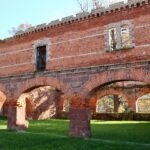 We reattached loose bricks in a derelict 19th-century coach house. Inside, we planted grass, turning the building for several years into a preserved ruin. In the spring of 2021, a terrace will appear high above the parkland next to the Coach House where guests will be able to relax surrounded by ancient oaks.
We reattached loose bricks in a derelict 19th-century coach house. Inside, we planted grass, turning the building for several years into a preserved ruin. In the spring of 2021, a terrace will appear high above the parkland next to the Coach House where guests will be able to relax surrounded by ancient oaks.
The Chapel's door is renovated
We renovated the wooden door to the chapel, an effort supported by the ongoing public fundraising for the renovation of the estate.
We were a stage of the Pinnacles of Literature Festival
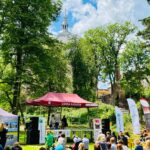 We hosted the Pinnacles of Literature Festival created by Nobel Prize in Literature Laureate Olga Tokarczuk, for the second time. During our festival day, July 12, 2020, about 1,000 people visited the estate.
We hosted the Pinnacles of Literature Festival created by Nobel Prize in Literature Laureate Olga Tokarczuk, for the second time. During our festival day, July 12, 2020, about 1,000 people visited the estate.
We co-organized the 5th International Summer School of Early Music
For the fifth time, eminent artists came to us to teach sackbut, cornett and voice. As in previous editions, the course culminated with a concert open to the public.
We took part in the recording of the early-music documentary Polychoral Discreetness
Sarny Castle appeared in a documentary on polychoral music of Mikołaj Zieleński and other great early-Baroque artists. The documentary was produced by the Musica Humana Association with support from Poland's Ministry of Culture and National Heritage.
We launched the European Centre for Garden Art
We launched The Eduard Petzold European Centre for Garden Art as a museum and center for heritage interpretation. We earmarked a large barn from the mid-19th century to eventually serve as the ECSO headquarters. The building's renovation started in 2020.
We planted more than 2,000 spring flower bulbs
Narcissi, daffodils and hyacinths will bloom in the spring, in the park and in the village. We are planning further such plantings.
We picked up the time capsule contents after maintenance
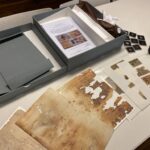 The contents of the time capsule from 1921 returned to Sarny Castle after maintenance at Nicolaus Copernicus University. It will become part of a permanent exhibition.
The contents of the time capsule from 1921 returned to Sarny Castle after maintenance at Nicolaus Copernicus University. It will become part of a permanent exhibition.
No luck with Norway Grants
Despite our best efforts, it was not possible to obtain a grant for the renovation of the Chapel and the granary despite a high score from experts. The 2020 support from the Norway Grants committee was mainly given to sites owned by local government units.
Sarny Park is safe
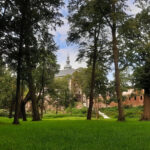 Controversial flood risk management designs are gone from the Polish government’s plans, as shown in the flood risk review published in December. We rallied the local community in 2019 to protest against the designs, and have kept a close eye on the process and maintained communication with the government since. Now our work is done, new flood basins in the area won't be built. Sarny Park would be severely impacted by the potential construction of a flood basin in the Włodzica river valley.
Controversial flood risk management designs are gone from the Polish government’s plans, as shown in the flood risk review published in December. We rallied the local community in 2019 to protest against the designs, and have kept a close eye on the process and maintained communication with the government since. Now our work is done, new flood basins in the area won't be built. Sarny Park would be severely impacted by the potential construction of a flood basin in the Włodzica river valley.
Hortuseum
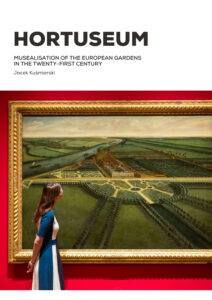 To celebrate the inauguration of the Eduard Petzold European Centre for Garden Art, here's our first publication.
To celebrate the inauguration of the Eduard Petzold European Centre for Garden Art, here's our first publication.
We're building this museum at Sarny Castle in Ścinawka Górna, Lower Silesia, Poland.
It's the first institution in Poland entirely focused on gardens, a musem as well as a centre for heritage interpretation. Its mission is to preserve and promote garden art of the historical Silesia and to support international cooperation for greenery.
The publication can be downloaded here: Hortuseum.
Discovery of Centuries-Old Paintings at Sarny Castle
A marvellously preserved painted ceiling from the 17th century was discovered this month during renovation work at Sarny Castle, in Lower Silesia in southwestern Poland.
This discovery, as well as the unveiling of new pieces of wall decoration, highlights artistic and historical value of the landmark whose history goes back to 1590.

The ceiling was discovered during demolition work in one of the castle buildings. For two centuries it had been covered with wooden boards in a modest-looking wing of the castle.
“These paintings are incredibly well preserved on the beams and ceiling boards, in a rich program painted by hand, not from a stencil,” said Inga Widlińska, PhD candidate at the Academy of Fine Arts in Krakow.
In the rooms with the newly discovered ceiling, relics of ceiling friezes and fragments of sgraffito from 1590 were also found. The ceiling will be preserved and the interior will be arranged as a museum.
The Krakow team of conservation specialists led by Inga Widlińska, part of the Department of Conservation and Restoration of Wall Paintings of Krakow’s Academy of Fine Arts, also in September discovered more wall paintings in the palace, first found in 2019 during a survey.
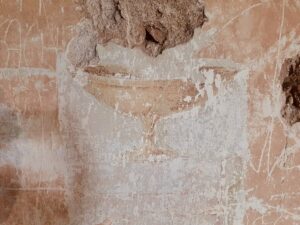
This year, they uncovered more of the late-Baroque decoration of the piano nobile living room. Larger pieces of decorations from the beginning of the 19th century were also uncovered, some of the few preserved painting decorations from that period in the region. Goblets and floral motifs were revealed in the room that is thought to have once served as the dining hall.
More 17th-century paintings were also uncovered on the ground floor of the residence, confirming they are in excellent condition. In 2021, the trust taking care of Sarny Castle intends to carry out conservation work of the rooms and open them to the public.
The work on the paintings in 2020 was supported by the Landmark Protection Authority of Lower Silesia.
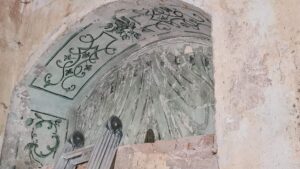
Until 2013, Sarny Castle was a ruin, with collapsed wooden ceilings and a heavily damaged roof. Since 2014, it's been a site of comprehensive renovation.
The Gatehouse with a café has been in operation since 2017. Its opening gave access to the Chapel of St. John of Nepomuk, decorated with a great Baroque painting from 1738. In 2020, the first farm building with guest rooms opened to the public.
The renovation effort is a challenge due to the extensive damage and the size of the compound. In 2016, new floors were rebuilt in the palace and the tower's cupola was renovated. In 2018, the palace roof was reconstructed. As of 2020, the roof is being covered with stone slate.

Despite the decrepitude of the last few decades, Sarny Castle has decorations that span the several hundred years of its existence.
“Contrary to the recent perception of this house as a ruin, it turns out that the level of authenticity is very high,” Barbara Nowak-Obelinda, Chief Landmark Protection Officer of Lower Silesia, wrote in a Facebook post.
The foundation in charge of Sarny Castle is carrying out renovation works with the financial support from the Ministry of Culture and National Heritage, the Lower Silesian Voivodeship and the Lower Silesian Landmark Protection Authority.
A list of Norway Grants beneficiaries is set to be announced in September. The foundation has applied for approximately 6.5 million zlotys ($1.7 million) in funding to renovate the Chapel of St. John of Nepomuk as well as the 1660 castle granary.
Photos: CC BY Fundacja Odbudowy Dworu Sarny
